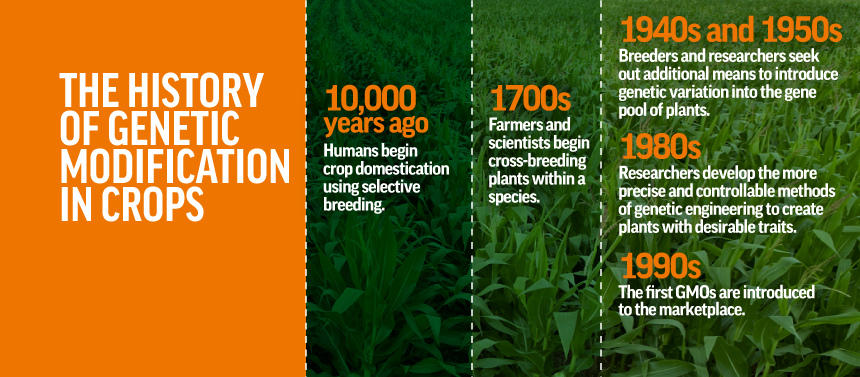Question
Answer
Expert response from Community Manager
Moderator for GMOAnswers.com
Monday, 31/03/2014 22:31
This is a great question, and we want to start by sharing information about how GM seeds came to be used in agriculture. Farmers have intentionally changed the genetic makeup of all the crops they have grown and the livestock they have raised since domestic agriculture began 10,000 years ago. Every fruit, vegetable and grain that is commercially available today has been altered by human hands, including organic and heirloom seeds.
In the late 20th century, advances in technology enabled us to expand the genetic diversity of crops. For years, university, government and company scientists intensively researched and refined this process. A major result has been GM seeds that maintain or increase the yield of crops while requiring less land and fewer inputs, both of which lessen the impact of agriculture on the environment and reduce costs for farmers.

Biotechnology in plant agriculture has come to mean the process of intentionally making a copy of a gene for a desired trait in one plant or organism and using it in another plant. The result is a GMO (genetically modified organism).
To answer your question, there are currently eight crops commercially available from GM seeds in the United States: corn, soybeans, cotton, canola, alfalfa, sugar beets, papaya and squash. No commercially available crops in the United States were created by nature alone. We humans, over our history, have altered all of our crops, often for taste or yield or disease resistance.
However, it is important to note that while agricultural GMOs are often the most talked about, GM technology is quite prevalent. Did you know the following products are GMOs, too?
- Human insulin
- Some vitamins
- Numerous enzymes used in cheeses, fermented beverages and starch products
If you have any additional questions, please ask at http://www.gmoanswers.com/ask. You might also be interested in our Explore section: http://www.gmoanswers.com/explore.